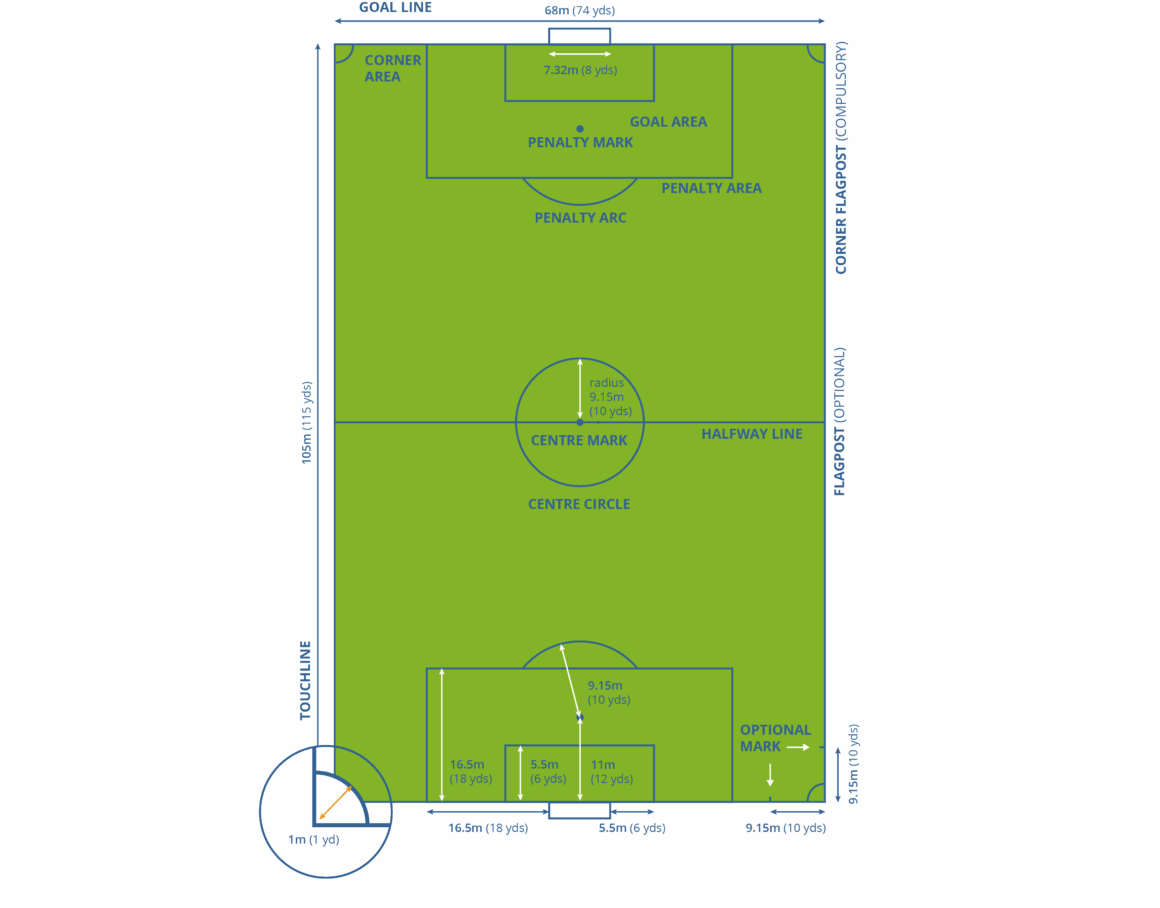Ever watched a football match and thought, “This field looks massive!” You’re not wrong. Football is played on one of the largest fields in sport, yet not all pitches are identical.
Here’s the interesting bit: unlike sports like basketball or tennis, where courts are fixed, football ground measurement rules allow a bit of flexibility. That means your local turf, a Premier League ground, and the World Cup final pitch might all be slightly different in size, but still within official guidelines.
So, whether you’re a fan, a player, or someone looking to build a football ground, let’s dive into why those football ground measurements matter and what the official standards are.
From Wild Fields to Standard Football Ground Size
In the early days, say, 19th-century England, football pitches were anything but standard. Clubs played on open fields that could feel like running from one farm to the next!
Today, thanks to the Laws of the Game, we have a clear framework for 11-a-side football pitch size in meters, and the measurement of football ground is more consistent than ever. It brings fairness without freezing out variations that suit different environments.
Official Football Ground Dimensions

An 11-a-side football pitch must be rectangular. The most widely used standard football field size recommended for professional and international play is:
- 105 metres (length) × 68 metres (width)
Of course, there’s room for variation. The Laws allow:
- Length: 100–110 m for international games, 90–120 m (for non-international matches)
- Width: 64–75 m for international matches, 45–90 m (non-international)
Still, the 105 x 68 m official standard is what most top stadiums use, making it the benchmark for the size of a football ground that feels just right.
Suggested Reads: Everything About 7-a-side Football Ground
Breaking Down the Pitch Markings
The pitch isn’t a green rectangle either; every line and space is measured precisely:
- Goal Area (6-yard box): 5.5 m from both goalposts, 5.5 m in depth
- Penalty Area (18-yard box): 16.5 m from both goalposts, 16.5 m onto the pitch
- Penalty Spot: Precisely 11 m from the goal line
- Penalty Arc (“D”): 9.15 m radius from the penalty spot
- Centre Circle: 9.15 m radius
- Corner Arc: 1 m radius in each corner
- Goalposts: 7.32 m wide x 2.44 m high
Suggested Reads: Everything About 9-a-side Football Ground Measurement
Wrapping It Up
And there you have it, the complete analysis of the size of a football ground. Whether you’re spectating from the stands, practising on the pitch, or designing blueprints for your own field, these figures give you an appreciation for how the beautiful game is constructed and why it plays the way it does.
Every pass, goal, and save starts on that meticulously measured rectangle of green.
Frequently Asked Questions
For international competitions, FIFA mandates a length of 100–110 m and a width of 64–75 m, but smaller variations are permitted for non-international ones.
2. Do general football sizes typically refer to 11-a-side football dimensions?
Yes, typical football pitch sizes generally mean 11-a-side games. Mini-sided games such as 5, 7, or 9-a-side football have proportionally smaller pitches for fewer players.
3. What is the size of an average football goal?
A normal football goal is 7.32 m wide and 2.44 m tall.
Find and book the perfect football ground near you on Playo today!
Download on Android | Download on iOS





0 Comments